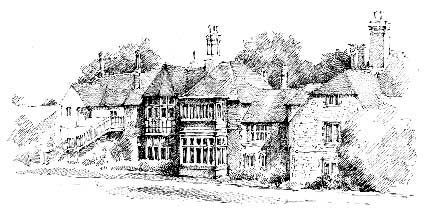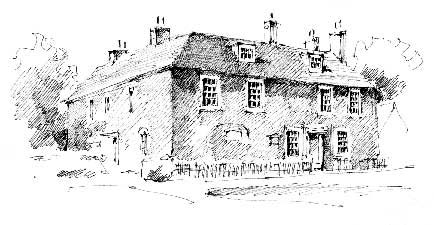Hampshire
FIRST ENGLISH CAPITAL ∗ LONGEST CATHEDRAL
∗ ST SWITHUN’S DAY ∗ MANNERS MAKETH MAN
∗ A GREAT HALL ∗ THE ROUND TABLE
∗ ENGLAND’S OLDEST CHARITY ∗ WEIGHTS AND
MEASURES ∗ THE ENGLISH NATIONAL GAME
The Bat and Ball, overlooking the birthplace of English cricket on Broadhalfpenny Down.
HAMPSHIRE FOLK
Gilbert White ∗ Jane Austen ∗ Tommy Sopwith ∗ Sir William Petty
∗ Sir Henry Ayers ∗ Augustus John
Winchester
WINCHESTER, set in a green, wooded valley on the River Itchen, was ENGLAND’S FIRST CAPITAL, established in the 9th century as home to the first English kings, and watched over by England’s founding king, ALFRED THE GREAT. It remained the capital for 200 years after the Norman invasion, sharing the honour with London.
King Alfred lies here somewhere, underneath the great Norman cathedral that broods over spacious lawns off the steep, narrow high street. Although it has no spectacular spire or high tower, the sheer size of WINCHESTER CATHEDRAL is awe-inspiring. It is THE LONGEST MEDIEVAL CATHEDRAL IN THE WORLD, 556 ft (169 m) from east to west, and covers 1½ acres (0.6 ha) within its walls.
Also within those walls, much against his will, lies King Alfred’s tutor, ST SWITHUN, Bishop of Winchester. When he died in 862 he was buried, at his own request, outside ‘where the rain might fall on him’. However, on 15 July 971, his body was dug up and put in a splendid new shrine inside the cathedral. This so incensed the fresh air-loving prelate that he made it rain for 40 days – hence the poem.
St Swithun’s Day, if thou dost rain
For forty days it will remain.
St Swithun’s day, if thou be fair
For forty days ‘twill rain no mair’.
Also buried here are several Saxon kings, the Danish king Canute, and William the Conqueror’s son, William II (Rufus).
In the nave is the grand tomb of WILLIAM OF WYKEHAM, who founded WINCHESTER COLLEGE in 1382, the SECOND OLDEST PUBLIC SCHOOL IN ENGLAND. Old boys are known as Wykehamists and are expected to live by the motto of their founder, ‘Manners Maketh Man’. The original schoolroom still exists and is today used as a study.
In the Cathedral Close is the PILGRIM’S HALL where those coming to visit the shrine of St Swithun were put up. IT HAS THE OLDEST HAMMER-BEAM ROOF IN ENGLAND, dating from the early 14th century.
In 1554 Mary Tudor married Philip of Spain in Winchester Cathedral, thus creating THE ONLY SPANISH KING OF ENGLAND. They spent their honeymoon in Wolvesey Castle next door.
At the top of the town is the GREAT HALL, all that remains of Winchester’s castle, which was destroyed by Oliver Cromwell in 1645. The hall, built by Henry III in 1225, it is regarded as the finest medieval hall in England after Westminster Hall. Hanging on the wall is a copy of KING ARTHUR’S ROUND TABLE, made in 1335 and repainted in Tudor times, with Arthur bearing an uncanny resemblance to Henry VIII.
A ten-minute walk along the water meadows brings you out at ST JOHN’S HOSPITAL, ENGLAND’S OLDEST SURVIVING CHARITY and site of THE OLDEST ALMSHOUSES IN ENGLAND, founded in 1136. For nearly 900 years travellers have been able to claim the WAYFARER’S DOLE here, of some bread and a drink. Visitors today still can, by knocking on the porter’s door.
Winchester’s 12th-century Westgate houses a museum featuring a fascinating collection of old weights and measures.
English Weights and Measurements
Up until 1965 England used the British ‘Imperial’ system of measurement. Since then the metric system is gradually being introduced, and today many weights, lengths and volumes are measured in metric.
The change is being made to bring England in line with the other countries of Europe, most of which had the French metric system imposed upon them by Napoleon in the 19th century. Certain well-loved English measurements are considered too precious to alter and have so far remained untouched – the mile and the pint, for instance.
The British ‘Imperial’ system is based on the human frame. The 5th-century philosopher Protagorus surmised that ‘Man is the natural measure of all things’, and units based on the human figure – the arm, thumb, foot, etc – are practical and easy to understand and visualise.
The first properly recorded unit of measurement was the Egyptian cubit, which was the length of the forearm from the elbow to the tip of the middle finger, and this was divided into such measurements as the span of the hand or the length of the fingers and thumbs.
The basic unit of the English measurement of length is the yard, which was originally taken as the distance between Henry I’s nose and the tip of his outstretched arm. In the 14th century, the English foot became based on the length of the foot of St Algar, which was carved on the base of a column at the entrance to the old St Paul’s Cathedral, site of one of London’s busiest markets.
The Romans inherited their foot from the Egyptians and divided it into 12 unciae (inches). When they occupied Britain they brought with them the ‘mille passus’ or 1,000 paces, origin of the English mile. A pace was five Roman feet, and a Roman mile was therefore 5,000 feet – this was changed in the reign of Elizabeth I to 5,280 feet or eight furlongs.
A furlong, now only used in horse racing, comes from the Old English ‘furh’ (furrow) and ‘lang’ (long), and refers to the length of a long furrow in an acre of ploughed field – an acre being one furlong by one rod, or the area a team of oxen could comfortably plough in one morning. A rod was the accepted length of the ox goad or prod, as used by medieval farmers.
Although an agreement to have a national standard of weights and measures was incorporated into Magna Carta in 1215, it wasn’t until 1826, during the reign of George IV, that the ‘Imperial’ system of weights and measures was introduced in an attempt to standardise the many different measurements that had evolved.
Weights were even more complicated, but were based on multiples of a grain of barley, except when it came to money, and then it was a grain of wheat. Money was based on weight and hence 240 pennies, which made up one pound in weight, became one pound in money terms as well.
The English pint is one-eighth of a gallon, which in 1824 was based on the volume of ten pounds of distilled water at 62°F (17°C). The word pint is thought to come from the Latin ‘picta’, meaning painted, referring to the painted mark on some drinking vessels indicating the correct measure.
Some old units have quietly died away. A guinea was one pound, one shilling, and was widely used as a convenient method of payment in auctions or transactions where a percentage was to be paid to a third party, such as prizes in horse-racing. The bidder would pay in guineas, the vendor would get the same number of pounds, and the third party would get the remainder as their fee. Guineas were introduced in 1663 and made of gold from Guinea (now Ghana) in Africa.
A league was three miles, the distance a man could comfortably walk in one hour.
Half a league, half a league,
Half a league onward. . .
Into the valley of Death
Rode the six hundred.
Alfred, Lord Tennyson, ‘The Charge of the Light Brigade’
Cricket
Hampshire is the home of the English national game, cricket. Up on the wide greensward of BROADHALFPENNY DOWN at Hambledon, the game of cricket developed, matured and took shape. Cricket in various forms had been played in the south of England for over 200 years, but had never been properly regulated until, in 1750, Richard Nyren, landlord of the Bat and Ball Inn, organised the HAMBLEDON CRICKET CLUB. (The following year, Frederick, Prince of Wales, eldest son of George II, became THE FIRST PERSON TO BE KILLED BY A CRICKET BALL, when he died from an abscess caused by being hit on the head by one.)
The players were drawn from the local community and played as much for local pride as for money. They drew up rules, not just for the play but for the size of bat and ball, and their fame spread countrywide as they became the strongest team in England, defeating county sides and, in 1777, an All England XI. Their headquarters, the BAT AND BALL, still dishes out hospitality up on Broadhalfpenny Down, and there is an obelisk over the road marking where the pitch was.
In the 1780s the influence of Hambledon Cricket Club started to wane. George Finch, 9th Earl of Winchilsea, became president of the club and began to recruit many of the players for his new London team, the Marylebone Cricket Club, which he founded in 1788. The MCC slowly took over as the leading authority in cricket as the game became more and more professional.
Buried a few miles away, at WEST MEON, is the MCC’s most celebrated groundsman, THOMAS LORD (1757–1832). Lord’s, the present home of the MCC, and headquarters of English cricket, was purchased and laid out by Thomas Lord in 1814, and named after him.
Well, I never  knew this
knew this
about
HAMPSHIRE FOLK
Gilbert White
1720–95
THE WAKES, a charming 18th-century country house at SELBORNE, south of Alton, was the home of England’s first ecologist, the REV GILBERT WHITE. He lived most of his life here as curate, and devoted his spare time to observing the wildlife and plants of the village and surrounding countryside. His book, The Natural History of Selborne, was the first book to record the natural world in such detail, and was a huge bestseller. The house is now a museum dedicated to his memory. It is still possible to climb to the top of the Hangar, the hill that overlooks the village, via the Zig Zag path cut out of the hillside by White and his brother.
Housed within The Wakes, alongside the Gilbert White Museum, are the Lawrence Oates archives (see Essex).
Jane Austen
1775–1817
JANE AUSTEN’S last home was in CHAWTON, a very pretty red-brick and thatch village just outside Alton. Here, in a beautiful old house with a garden full of flowers, Jane Austen spent the last seven years of her life, and here she wrote Mansfield Park, Emma and Persuasion. Even though she became ill, Jane was very happy living in Chawton with her mother and sister Cassandra. She spent her final days in Winchester and is buried in the cathedral there. The house in Chawton is now a museum in her memory.
Jane would often walk half a mile through the village to CHAWTON HOUSE, the Elizabethan manor where her brother Edward lived. It is now home to the Centre for the Study of Early English Women’s Writing, which runs courses and events, and houses an impressive library with works by Mary Wollstonecraft, Fanny Burney, Mary Shelley and many others.
Tommy Sopwith
1888–1989
A modest headstone outside the eastern wall of the Saxon church at Little Sombourne, near Stockbridge, marks the grave of one of England’s flying pioneers, TOMMY SOPWITH. He lived at nearby Longstock House, in the Test valley, where he died aged 101. He was best known as the designer of Britain’s finest First World War fighter, the SOPWITH CAMEL, but he also won a number of flying awards. In 1910 he won the Baron de Forrest award for THE LONGEST FLIGHT FROM BRITAIN TO THE CONTINENT, flying 161 miles (259 km) from Eastchurch, Sheppey, to Tirlemont, in Belgium, in three hours. In 1912 he won THE FIRST AERIAL DERBY, 81 miles (130 km) around a circuit of London. Then, in 1913, he achieved THE BRITISH HEIGHT RECORD of 13,000 ft (3,962 m) in a tractor biplane he had designed himself. He went on to establish THE FIRST TEST PILOT SCHOOL IN THE WORLD. The Sopwith Aviation Company eventually became Hawker Siddeley.
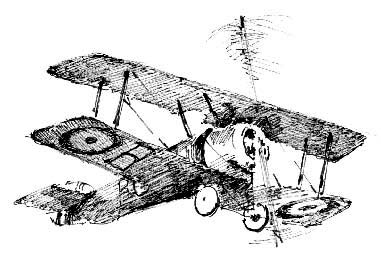
SIR WILLIAM PETTY (1623–87), economist, philosopher and the man who first mapped Ireland, was born in ROMSEY. He designed THE WORLD’S FIRST CATAMARAN, the Experiment, which won the world’s first recorded open yacht race, across Dublin Bay, in 1663.
SIR HENRY AYERS (1821–97), premier of South Australia and the man after whom Ayers Rock is named, was born in PORTSEA.
AUGUSTUS JOHN (1878–1961), the portrait painter, is buried at FORDINGBRIDGE. His illegitimate daughter Amaryllis Fleming, by Ian Fleming’s widowed mother Evelyn, became a noted cellist and features in the James Bond novel, The Living Daylights.


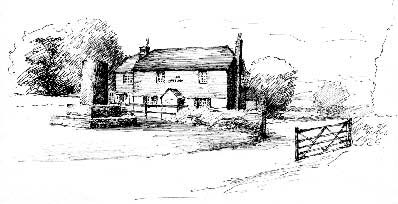


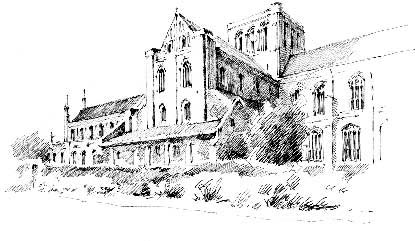
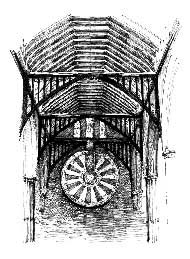

 knew this
knew this 